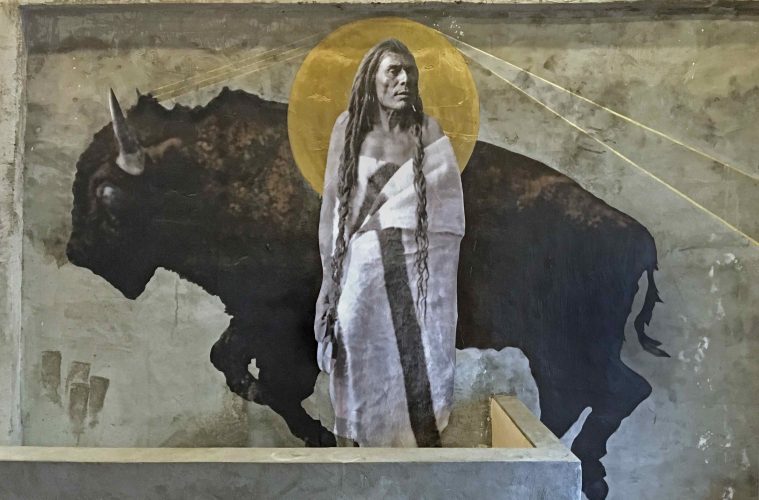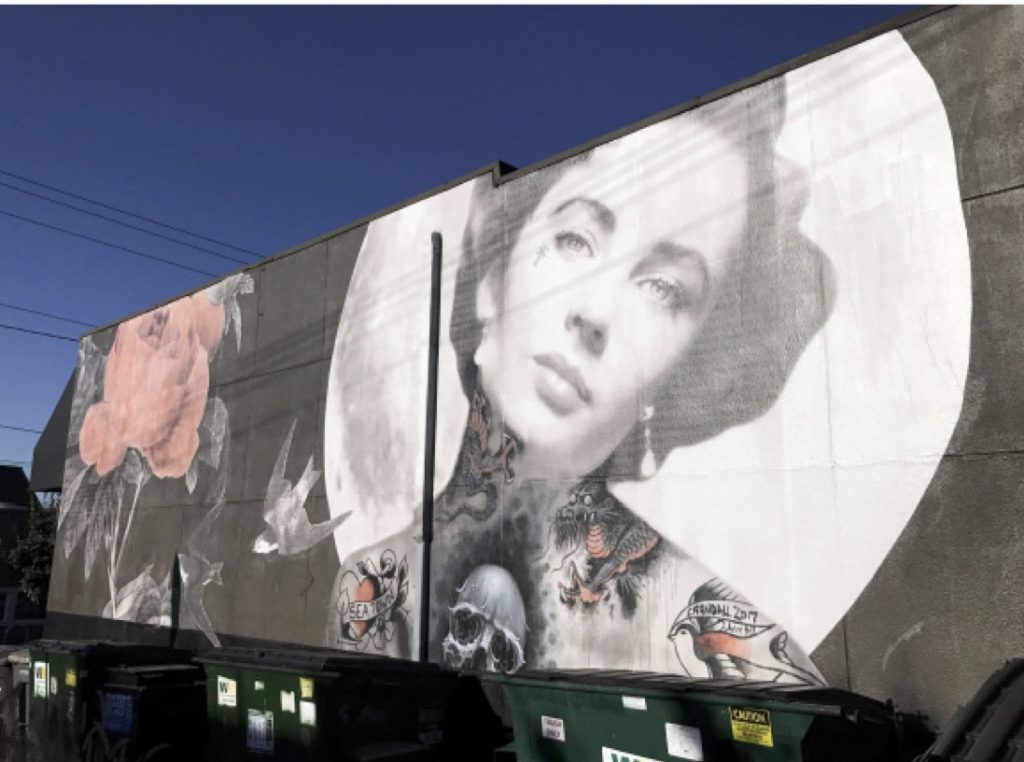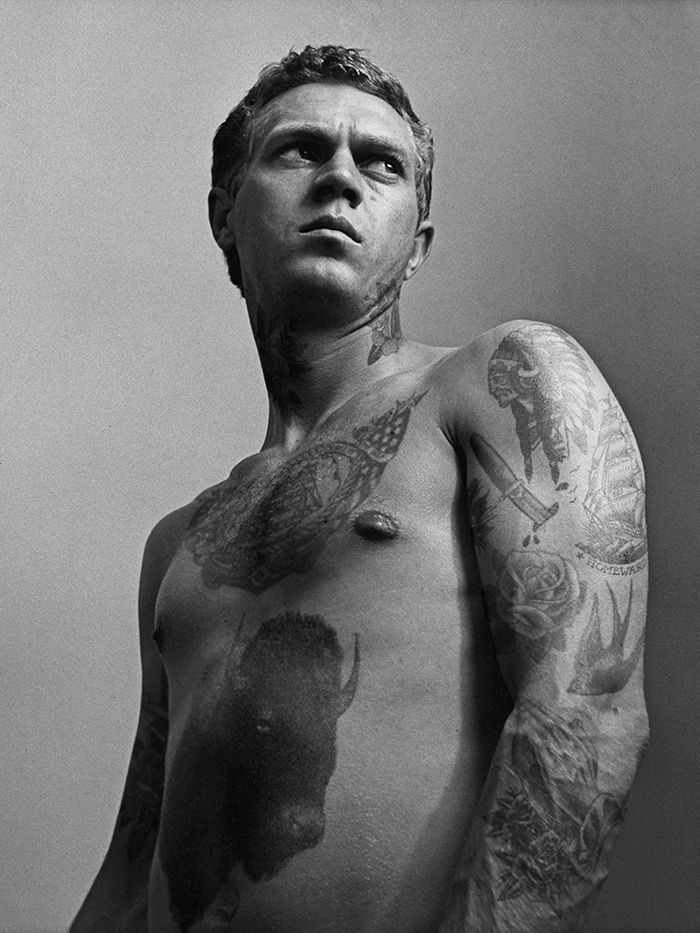For the first couple of weeks in February, Cheyenne River Sioux artist Cheyenne Randall will be in residency at the Heard Museum in central Phoenix. The mural work will remain up indefinitely, but due to its ephemeral nature, visitors will likely have about a year to view Cheyenne Randall: The Mural Project.
The project is a collaboration between the artist and the museum’s fine arts curator, Erin Joyce, who came on board at the Heard in the fall of 2017. Working with Randall is something she wanted to do long before then. “I first became aware of his work about four years ago via Instagram,” she tells us, “and was intrigued when I saw his piece of the tattooed Audrey Hepburn.” Sometime after that she discovered that Randall was a Cheyenne River Sioux artist, which was exciting to her not only because it gave context to the work she had admired immediately but also because working with Native artists has been her focus for many years.
The result of this connection between artist and curator will be a total of eight murals. Six will be located on the grounds of the eight-acre Heard Museum campus. The others will be pop-up satellite extensions of this exhibition. One will be in downtown Flagstaff and the other in the Grey Mountain area of the Navajo Nation. Up north, Randall will be collaborating with artist Chip Thomas (aka jetsonarama), whose Painted Desert Project creates art across the Navajo Nation. On the Heard Museum property, Randall will activate lesser-traveled and underutilized areas with his murals.
Randall’s mixed media work comes to life through digital photography, paint, Photoshop and wheat-paste installation. The pervasive cultural obsession with celebrities – and the broader idea of celebrity, itself – is a recurring theme in his art. Iconic images of public figures are amended to feature them covered in tattoos. His subjects have included the Kennedys and James Dean.
The ink adornment, on its own, takes the timelessness of the photo away, making the subject a priority focus rather than just a legacy icon. It also examines the subcultures of tattooing and rogue art, which inspires thoughts on boundaries and borders. A deeper look at the graphics that Randall places on the subjects shows his use of indigenous imagery, finding him exploring his own Indigeneity and culture, as well as how all of these factors interact.
Besides the opportunity to bring to fruition a long-desired exhibition by an artist whose work she admires, Joyce is excited about some of the broader benefits that Randall’s residency may spark. “Overall, this project is generating work from great contemporary artists,” she says, “and that alone is wonderful. I hope it also helps court younger audiences to be a part of this institution.” She hopes that having the project expand beyond the museum’s walls will be a part of helping to break down the stereotypes and fears that keep people from visiting museums.
Cheyenne Randall
Heard Museum Artist in Residence
February 2–15
www.heard.org




